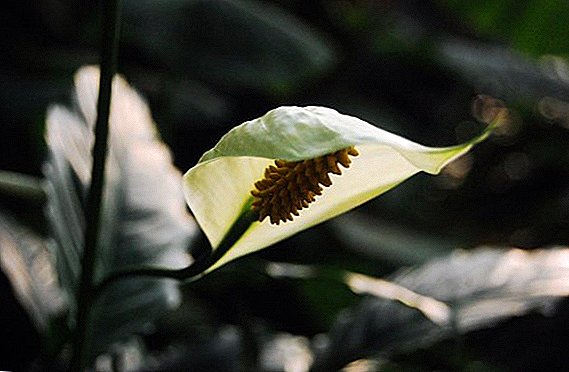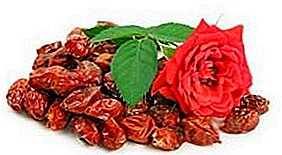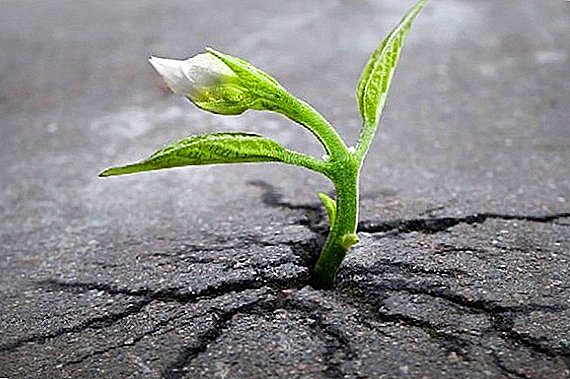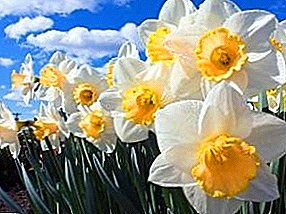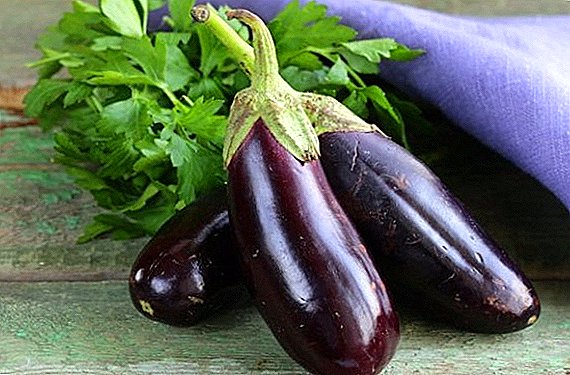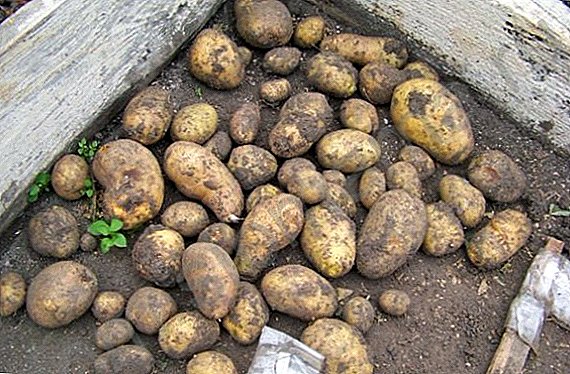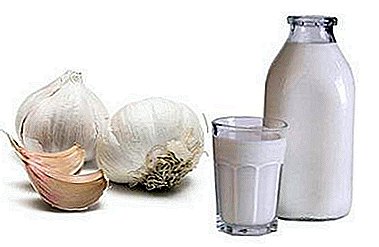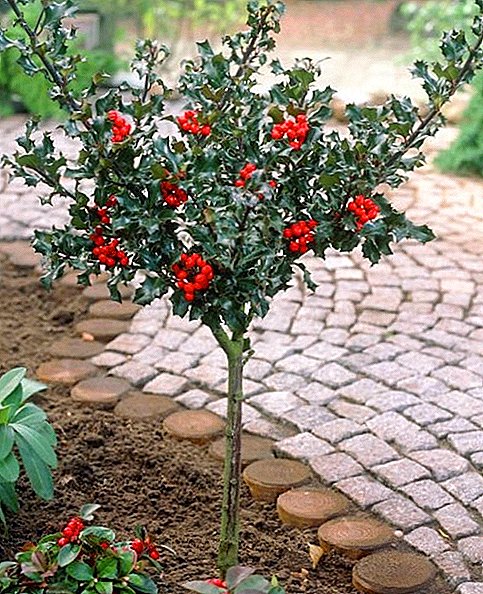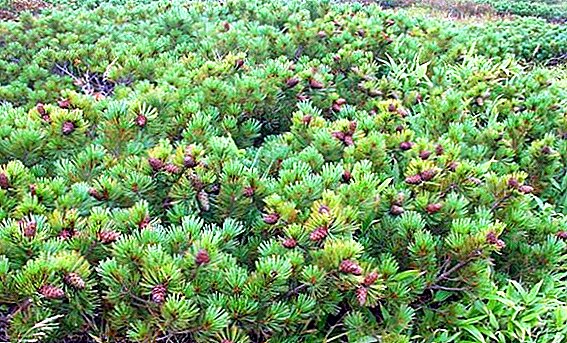 The evergreen coniferous plant does not require special care, but it looks great at each site and can complement any design idea. However, like any plant, elfin cedar needs the gardener to observe certain rules, which we will write about below.
The evergreen coniferous plant does not require special care, but it looks great at each site and can complement any design idea. However, like any plant, elfin cedar needs the gardener to observe certain rules, which we will write about below.
Description and photos of culture
The entire area from Primorye to the Arctic Circle is considered the birthplace of elfin cedar. Plant description Elfin cedar is simple, but still the tree, due to its appearance, is often confused with shrubs. However, it is not.
The plant belongs to the Pine family, it is creeping, woody. Usually the tree is not high. The crowns are more often bowl-shaped, less often tree-like.  Unusual bark: it has a gray color, while it is covered with brown spots along the entire length. The texture is always smooth. The wood is very dense, it is difficult to break through or break.
Unusual bark: it has a gray color, while it is covered with brown spots along the entire length. The texture is always smooth. The wood is very dense, it is difficult to break through or break.
Branches that extend over fairly long distances are pressed to the ground. Their tops slightly rise up (about 40 cm in height).
Did you know? The color of the tree changes throughout the life cycle.
Young shoots have a pronounced green color. Tops at the same time become reddish. A little later, the tree begins to gradually become light brown.
The plant has an atypical appearance for the Pines: needles are collected in peculiar bunches. Each of them has up to 6 needles having three faces, which can reach up to 8 cm in length.  Small cones grow on the tree, 2-4 pieces per branch. They have a rounded shape, slightly narrowed towards the end. 3 cm wide and about 6 cm long. They appear in the second year of flowering.
Small cones grow on the tree, 2-4 pieces per branch. They have a rounded shape, slightly narrowed towards the end. 3 cm wide and about 6 cm long. They appear in the second year of flowering.
The root system has the following structure: multiple branchings depart from the main root. Over time, the largest root dies. Instead, small roots begin to develop more actively. Their large number feeds the whole tree.
Did you know? If the superficial creeping roots for a long time are outside as closely as possible to the ground, then they begin to root the soil.
Popular varieties
One of the most popular varieties of pine Cedar elfin cedar is Glauka. It is a shrub that reaches 1.5 m in height and exactly twice as wide. It grows slowly, while very fond of good lighting.  Cones get a red-purple hue, very much stand out from the rest of the green. Later, they will become a light brown color, while they will glitter in the sun.
Cones get a red-purple hue, very much stand out from the rest of the green. Later, they will become a light brown color, while they will glitter in the sun.
We also advise you to find out how to grow cedar pine on the plot.Needles have an unusual color: blue with a green tint. They can reach a length of up to 10 cm. This plant is considered unpretentious in the care. It suits almost any type of soil. Shrub can easily survive severe frost to -45 ° C below zero.
Draijers dwarf - this name was given to the next rather popular variety of pine. It also grows very slowly. The small size of this shrub allows you to place it anywhere.  In a year the plant increases by about 5 cm. The needles have a color similar to Glauka: blue needles about 3 cm in size.
In a year the plant increases by about 5 cm. The needles have a color similar to Glauka: blue needles about 3 cm in size.
Dwarf blue - pine, which widely spreads its branches. The needles have the same blue tint, like many representatives of elk cedar. But the color complements the charming white color.  Conifer beams are located radially, they are slightly pointed at the ends. Needles usually do not reach more than 3-4 cm in length.
Conifer beams are located radially, they are slightly pointed at the ends. Needles usually do not reach more than 3-4 cm in length.
Globe - has the form of pins. It grows up to 2 m in width and also in height. Pine is thick around the perimeter. Blue needles with green tints. Needles grow to 7 cm, this length is one of the largest among the other varieties. The tips of the needles are slightly curved.  Jeddeloh - elfin wood, which is rapidly growing in height and width. After the end of the main growth period, will give an annual increase: about 9 cm.
Jeddeloh - elfin wood, which is rapidly growing in height and width. After the end of the main growth period, will give an annual increase: about 9 cm.  The branches rise obliquely, while they are densely covered with needles. The tree reaches 5 cm and combines 2 colors: bluish-white needles, which are covered with a green shade from above.
The branches rise obliquely, while they are densely covered with needles. The tree reaches 5 cm and combines 2 colors: bluish-white needles, which are covered with a green shade from above.
Where to grow elfin wood
In placing this plant unpretentious, but you need to take into account some of the rules when planting. The greatest problem is surface roots, which require a large area of coverage. At the same time, it is necessary to take into account suitable lighting, soil type and the possibility of timely watering.
Did you know? The roots of cedar elfin protect from avalanches. Addition roots strengthen the soil and retain moisture for a long time.If the planting of cedar elfin is carried out correctly and, at the same time, proper care is provided, the plant will bloom for more than 200 years.
Location and lighting
The plant prefers an open area, well lit by the sun. But it can get along well in dark areas.  For landing it is not necessary to choose places that are prone to stagnant water. Nevertheless, the soil should be sufficiently moist. A strong wind or frost can be easily tolerated by a plant, but it is better to avoid such areas.
For landing it is not necessary to choose places that are prone to stagnant water. Nevertheless, the soil should be sufficiently moist. A strong wind or frost can be easily tolerated by a plant, but it is better to avoid such areas.
Soil for the plant
It is very easy to pick up the soil for elfin - he is absolutely not picky about it. In the wild, pine lives on various types of land: fertile soil, heavy or depleted, stony or clayey terrain.  Recommendations for landing are still present - if there is a lot of sand in the soil, it is better to add some clay. The ratio of clay and sand is 2 to 1, respectively. On heavy soils, drainage is required. A layer of sand or gravel should be 20 cm.
Recommendations for landing are still present - if there is a lot of sand in the soil, it is better to add some clay. The ratio of clay and sand is 2 to 1, respectively. On heavy soils, drainage is required. A layer of sand or gravel should be 20 cm.
Get acquainted with such coniferous plants: thuja, spruce, fir, larch, cedar, yew, juniper, cypress.
Planting seedlings
For planting is best to use sandy soil. For such purposes, the seedling just dug out of the forest will not work, as the plant does not like changing its habitat.
Important! Choose seedlings that have reached the age of 3-5 years.If you take an unprepared seedling, it will die in the next year of flowering. To prevent this from happening, buy plants in specially designated places.
 Starting landing is better in late April or early autumn. The pit in which the seedling will be placed should reach a depth of 1 m.
Starting landing is better in late April or early autumn. The pit in which the seedling will be placed should reach a depth of 1 m.Before planting, you need to place the fertilizer and the mixture, which will consist of sod land, as well as topsoil. In addition, you can add river sand or clay.
Important! Add to the land of nitrogen fertilizer in the amount of 40 g.The root neck of the pine when planting should be flush with the ground. Please note that the interval with other plants should be large enough (up to 4 m, if it is large plants), as cedar stanica needs a lot of space for its roots.
How to care for conifers
Creeping pine requires not only proper planting, but also proper care in order to bloom for many years. Cutting the plant is not necessary. However, if you want to make the crown more dense, then you can manually break off young shoots by one third of their entire length.  In cold winters it is better to shelter young pines from frost. This rule does not apply to adults, it will easily endure the cold. For this purpose, using a spruce branch or burlap. Do not block the air to the plant.
In cold winters it is better to shelter young pines from frost. This rule does not apply to adults, it will easily endure the cold. For this purpose, using a spruce branch or burlap. Do not block the air to the plant.
Watering organization
The plant belongs to drought-resistant breeds, so it does not need special watering. The needles fall to the roots, which often retains moisture. Many species have enough seasonal rainfall.  Additional care may be needed for young seedlings. They should be watered in the autumn. This is necessary because wet soil freezes up much less, and needles will not burn in the spring. If the roots of the pine are frozen, they will not give enough moisture to the crown, which begins to wake up early from hibernation.
Additional care may be needed for young seedlings. They should be watered in the autumn. This is necessary because wet soil freezes up much less, and needles will not burn in the spring. If the roots of the pine are frozen, they will not give enough moisture to the crown, which begins to wake up early from hibernation.
Fertilizer
Especially well you need to fertilize young plants, after planting which less than a couple of years. Most suitable mineral fertilizers. They need to be placed in a grenade circle in the amount of 40 g per square meter.  After two years of flowering pine, it will no longer need to fertilize. She will be completely missed of those organic fertilizers that are given off by needles that have accumulated under the branches. There accumulates a sufficient amount of humus.
After two years of flowering pine, it will no longer need to fertilize. She will be completely missed of those organic fertilizers that are given off by needles that have accumulated under the branches. There accumulates a sufficient amount of humus.
Breeding methods
The most effective way of breeding pine is considered to be seed multiplication. Other methods, such as grafting or grafting, are not commonly used.
When growing cedar elfin from seeds, it is important not to forget about stratification. It is necessary to provide imitation of winter conditions on the seeds, so that they would rather ascend. It is best to do it within six months. Optimal temperature -2-5 ° C heat.  Then you need to put the seeds in a container or just a box of earth. Moss placed on top. Boxes designed for this purpose must have special openings. They are designed to remove excess moisture from the ground.
Then you need to put the seeds in a container or just a box of earth. Moss placed on top. Boxes designed for this purpose must have special openings. They are designed to remove excess moisture from the ground.
After a couple of months, the first shoots will appear. For a month they can reach 10 cm in length. They can already be planted in the prepared soil. If you immediately plant the seeds in open ground, then there is a high probability that they will be eaten by rodents.
Important! Do not bury the seeds, they only need to put on the ground, covering the top with moss.
In order for the plant to germinate, you can make sharp changes in temperature. This is a well-known technique that allows you to awaken escape. To do this, place the seeds in the freezer briefly. After that, rinse them in warm water.  The land where shoots will grow should be well loosened. Observe the interval between the planted seeds. It must be at least 5 mm. So sprouted shoots do not lift the ground, which covers the roots of neighboring shoots.
The land where shoots will grow should be well loosened. Observe the interval between the planted seeds. It must be at least 5 mm. So sprouted shoots do not lift the ground, which covers the roots of neighboring shoots.
If you want to preserve the decorative nature of cedar elfin wood, read how to deal with conifer pests.Thus, seed reproduction takes place, but the cutting method for pines does not resemble. Some tall species are capable of breeding by grafting. However, the best way to recognize the planting of seeds or ready seedlings.
Few of the beneficial properties
Pine is famous not only for its decorative features. The tree is actively used in medicine, cooking, cosmetology and other areas.
Did you know? Some women of the Far East wear a bracelets made from elfin cedar on their wrist. It normalizes blood pressure and even treats hypertension.The plant contains many unique vitamins, minerals, and phytoncids. It is used as a well-known cough and multivitamin remedy.
 In addition, it has analgesic, diuretic, absorbable, embalming, healing and expectorant effects.
In addition, it has analgesic, diuretic, absorbable, embalming, healing and expectorant effects.Oil nuts can reduce inflammation of the upper respiratory tract. It is often used to treat diseases such as influenza, asthma, bronchitis and even tuberculosis.
It also helps with rheumatic and muscular pains, providing a healing effect. Needle oil has many beneficial properties. Antipyretic, sedative, anti-inflammatory - only some of them.  Pine nuts are actively used in cooking: they are eaten raw or toasted. Oilcake is often used to make halvah and sweet fillings for cakes, pastries and other desserts. Aromatic abilities of nuts are in high demand.
Pine nuts are actively used in cooking: they are eaten raw or toasted. Oilcake is often used to make halvah and sweet fillings for cakes, pastries and other desserts. Aromatic abilities of nuts are in high demand.
Effective are masks using yeast plants. They help to deal with skin problems, in particular, with acne.
The antipyretic property also has a goof silver, goat willow, barberry, heather.Oils are able to give the skin more elasticity, rejuvenate it. Shampoo with elfin extract strengthens hair, accelerates their growth and gives shine along the entire length.
Cedar elfin wood is a popular plant, which is distinguished not only by its decorative effect, but also by its beneficial properties, which are manifested in areas such as medicine, cooking and cosmetology. At the same time, pine is extremely easy to care for.


